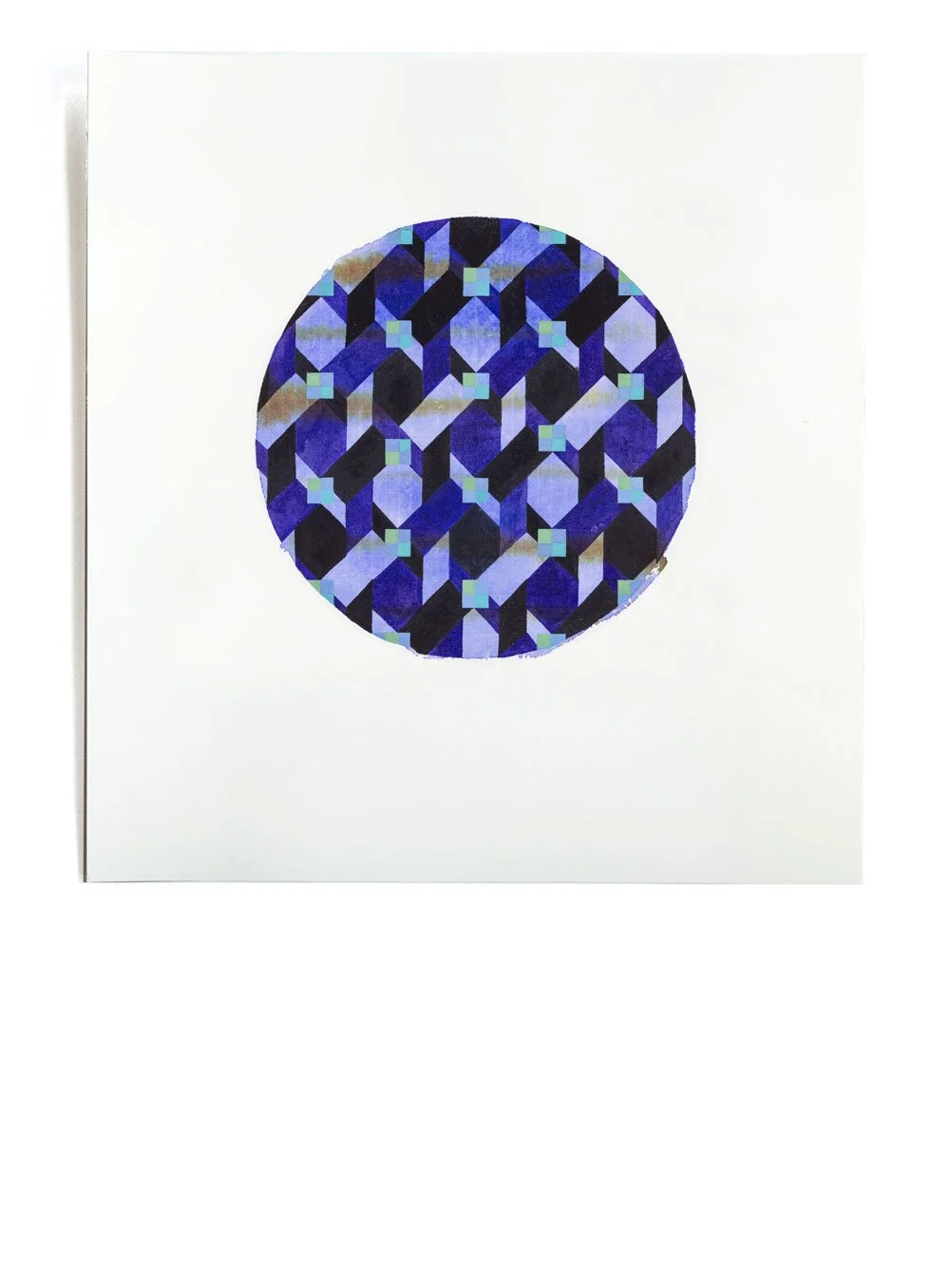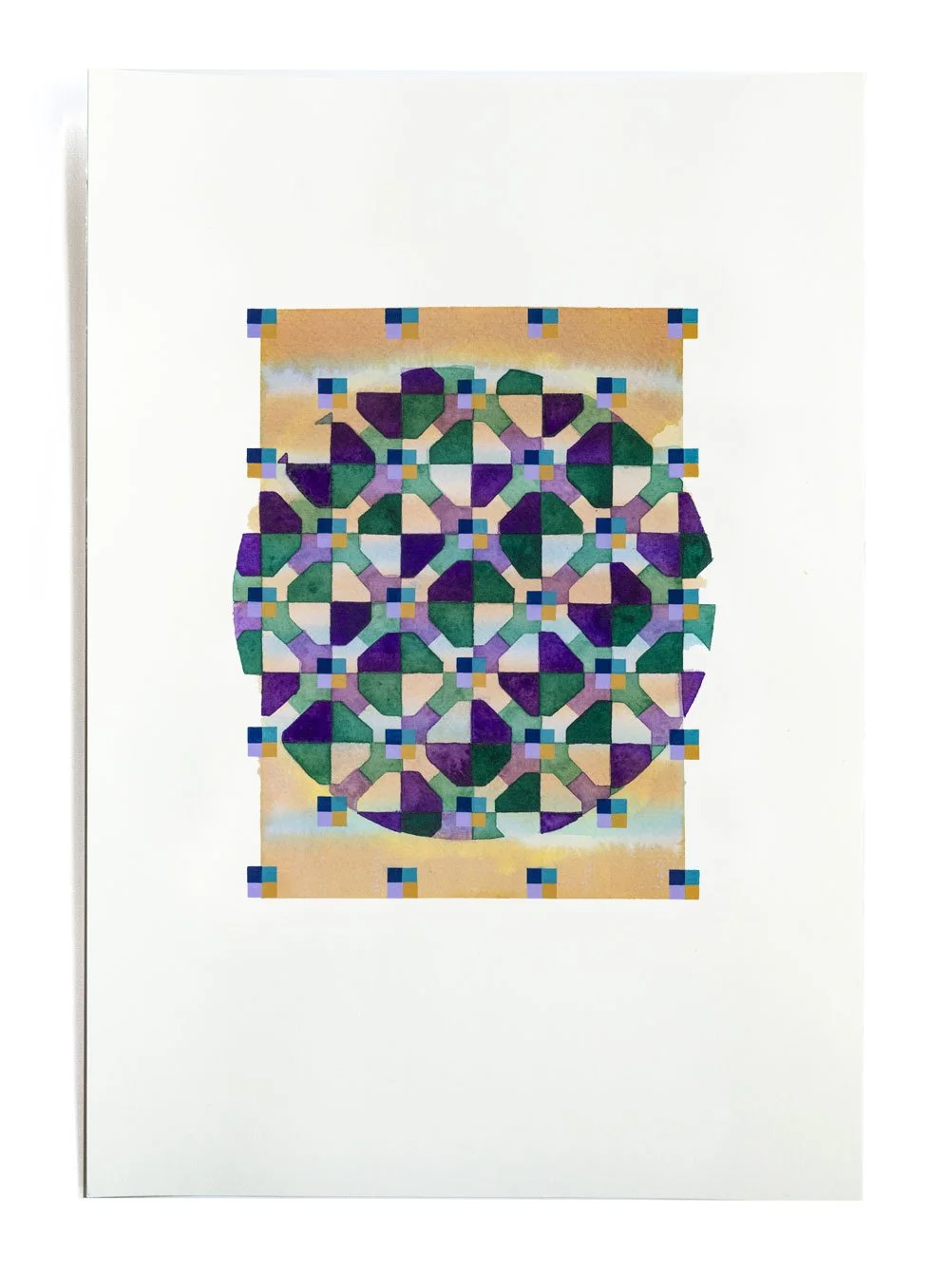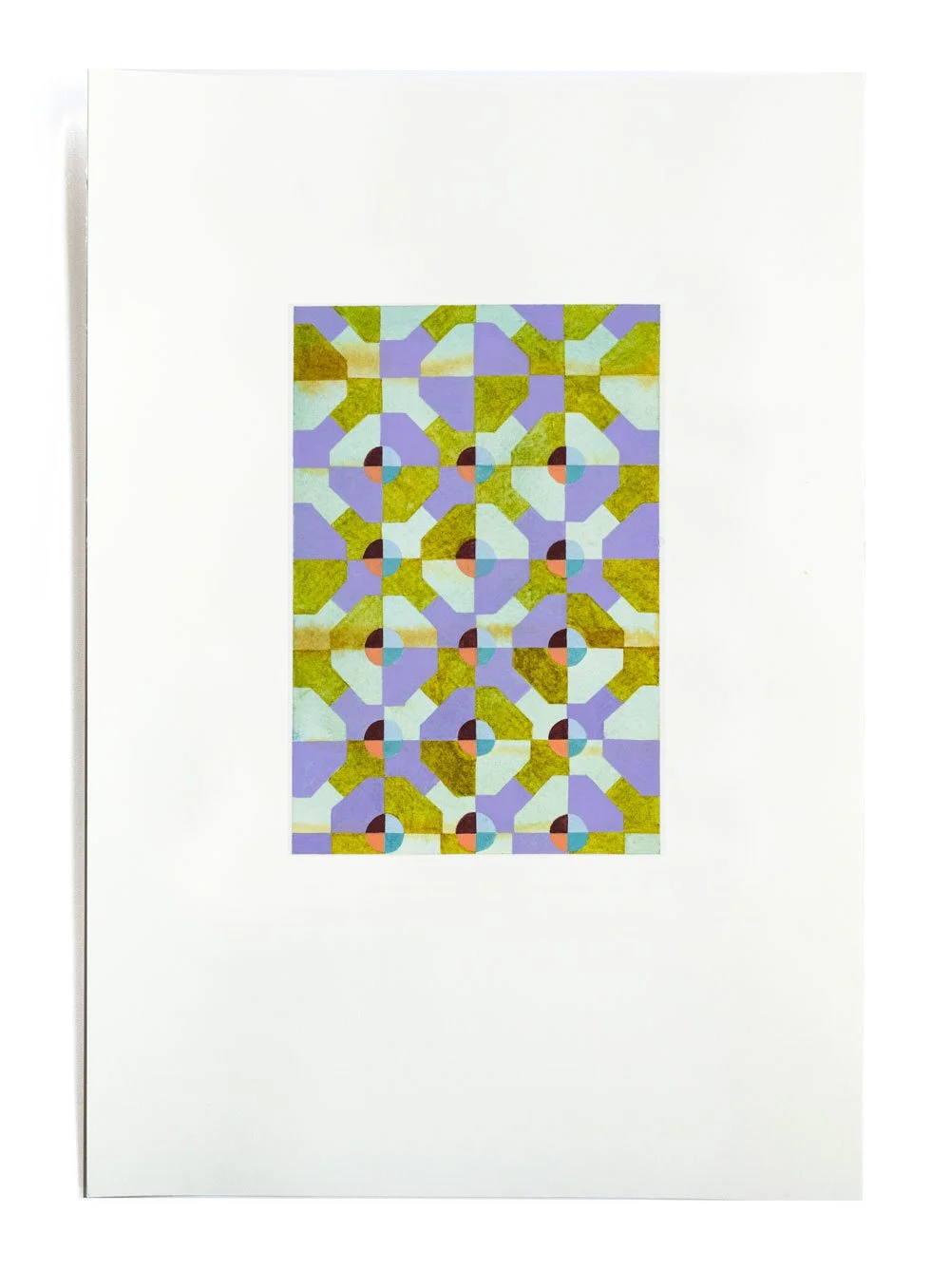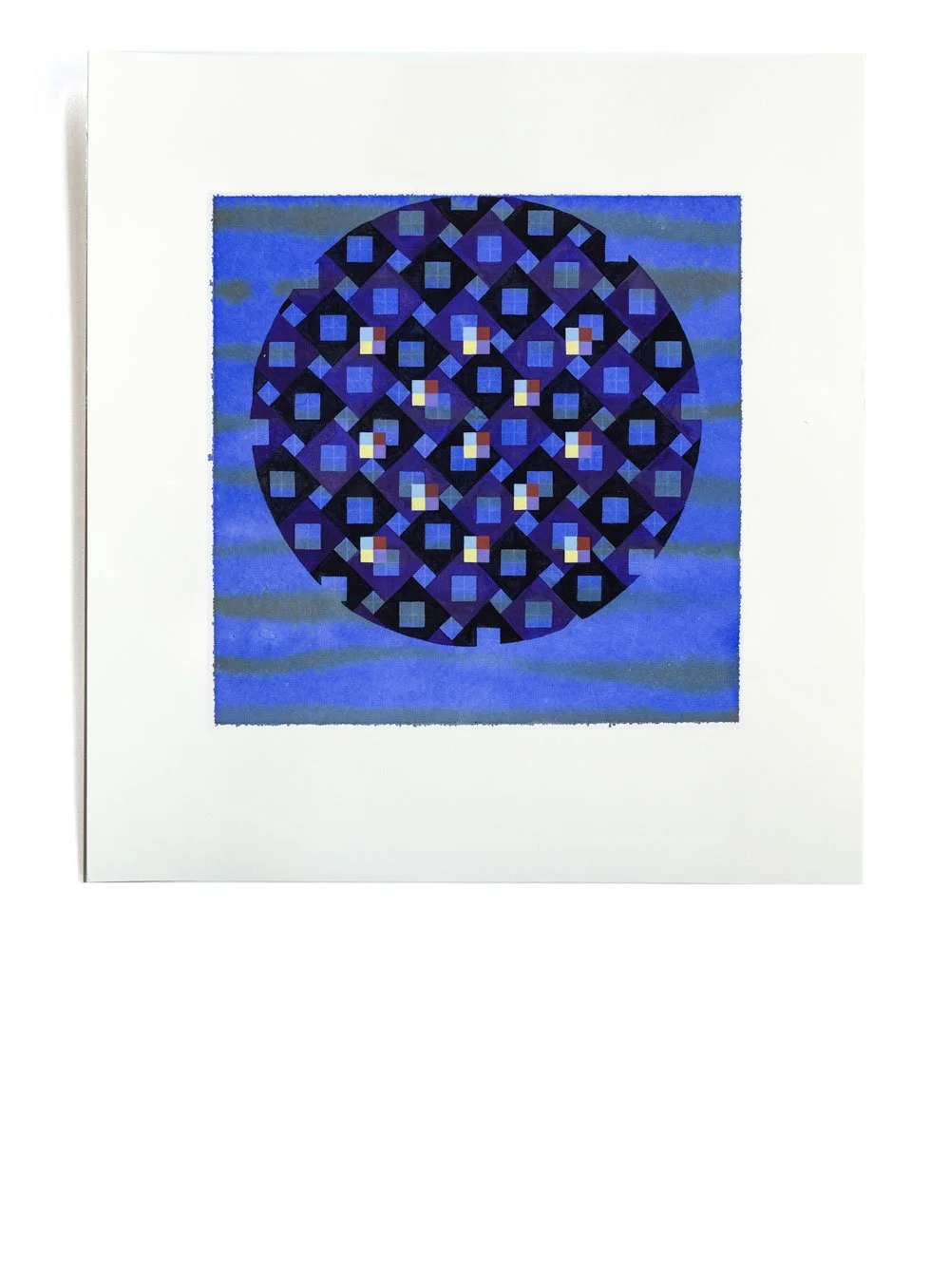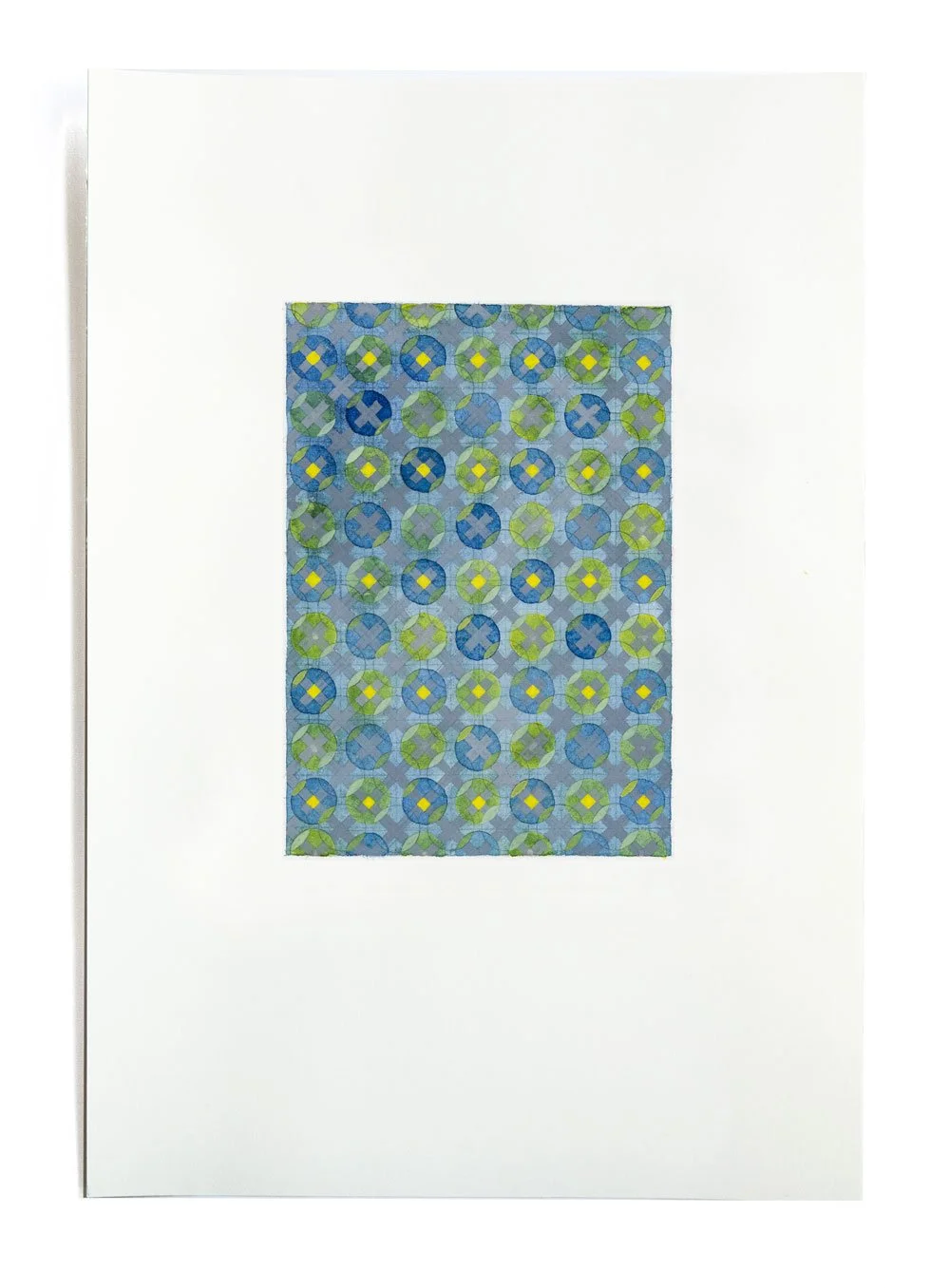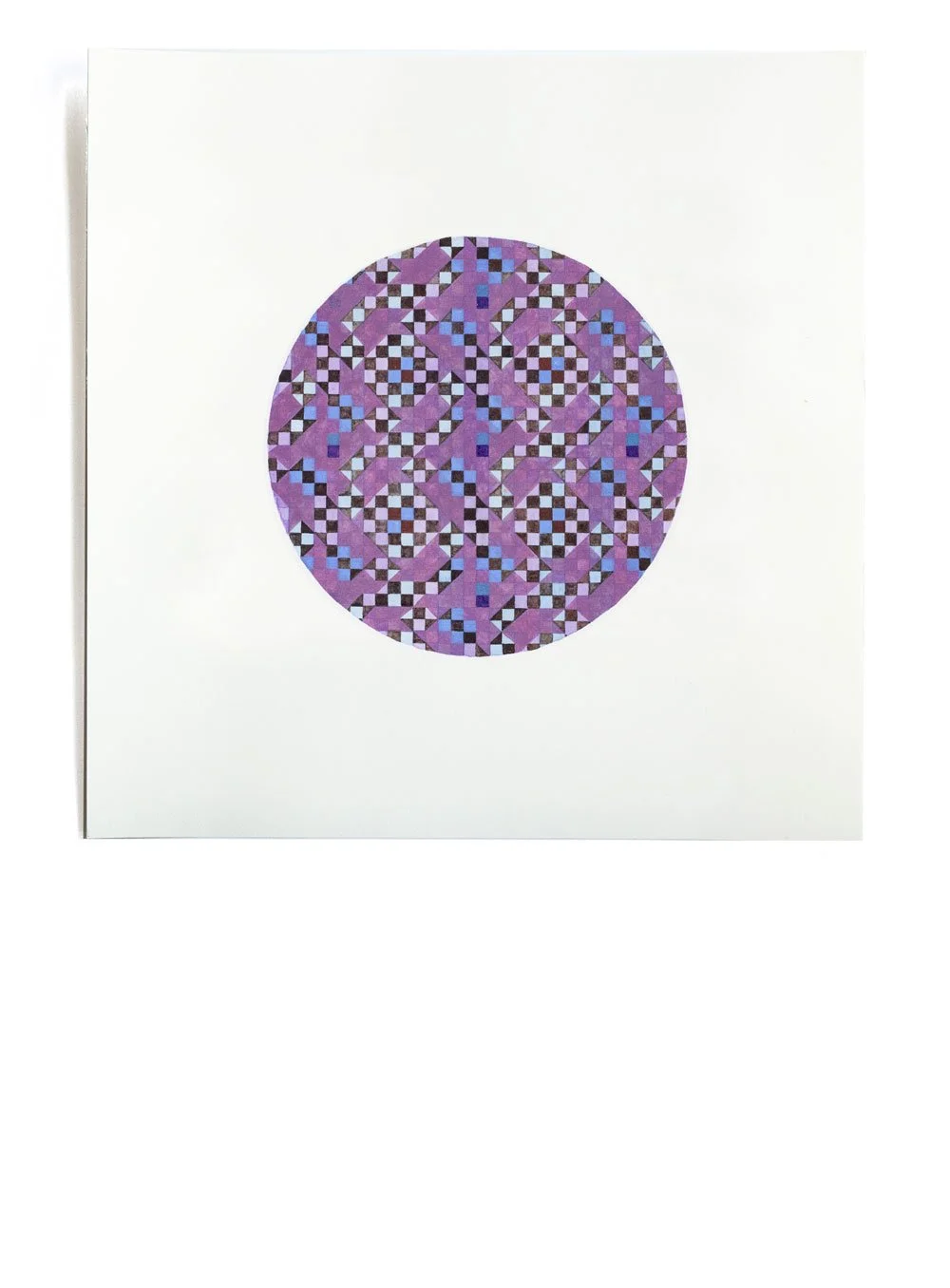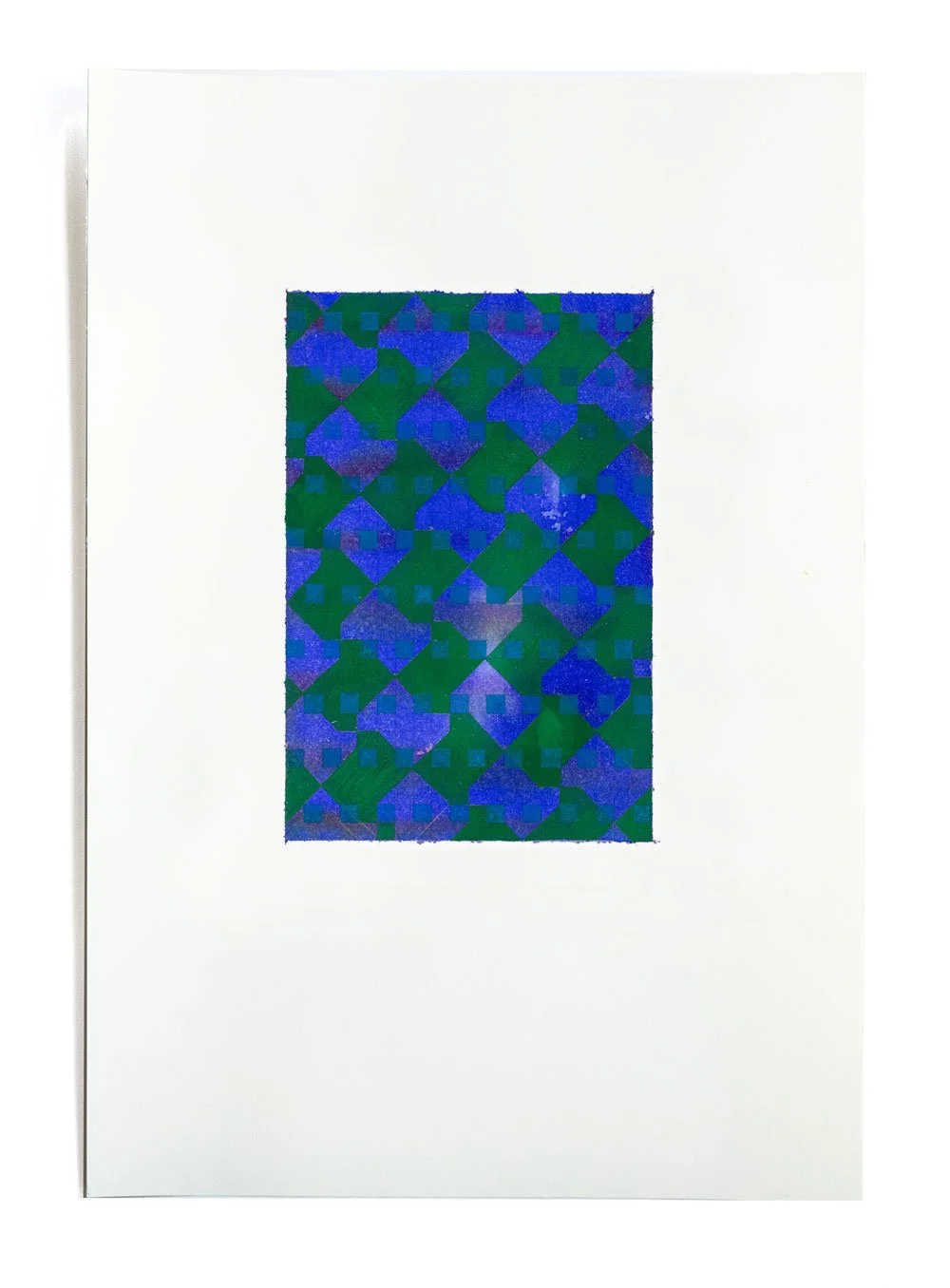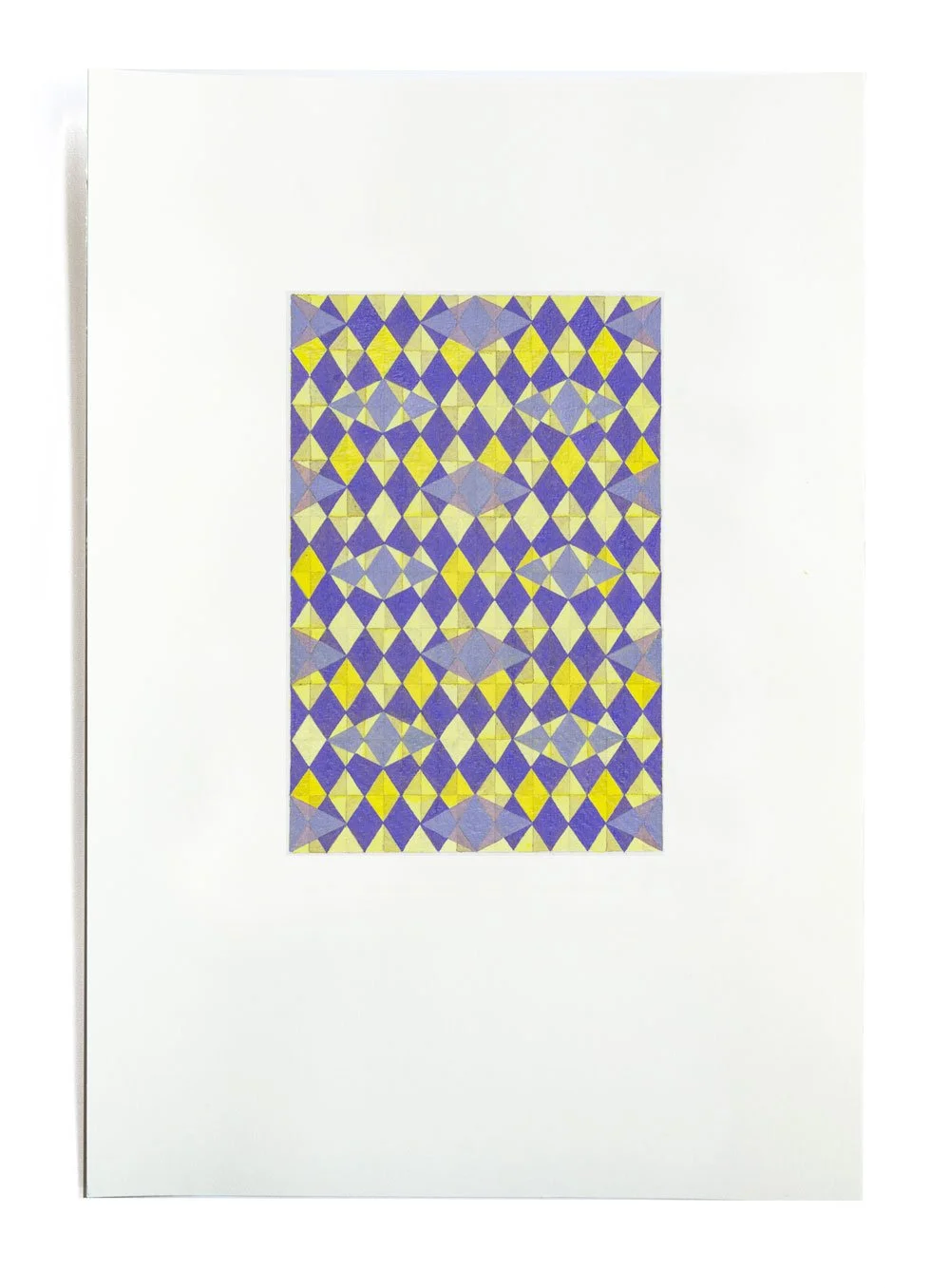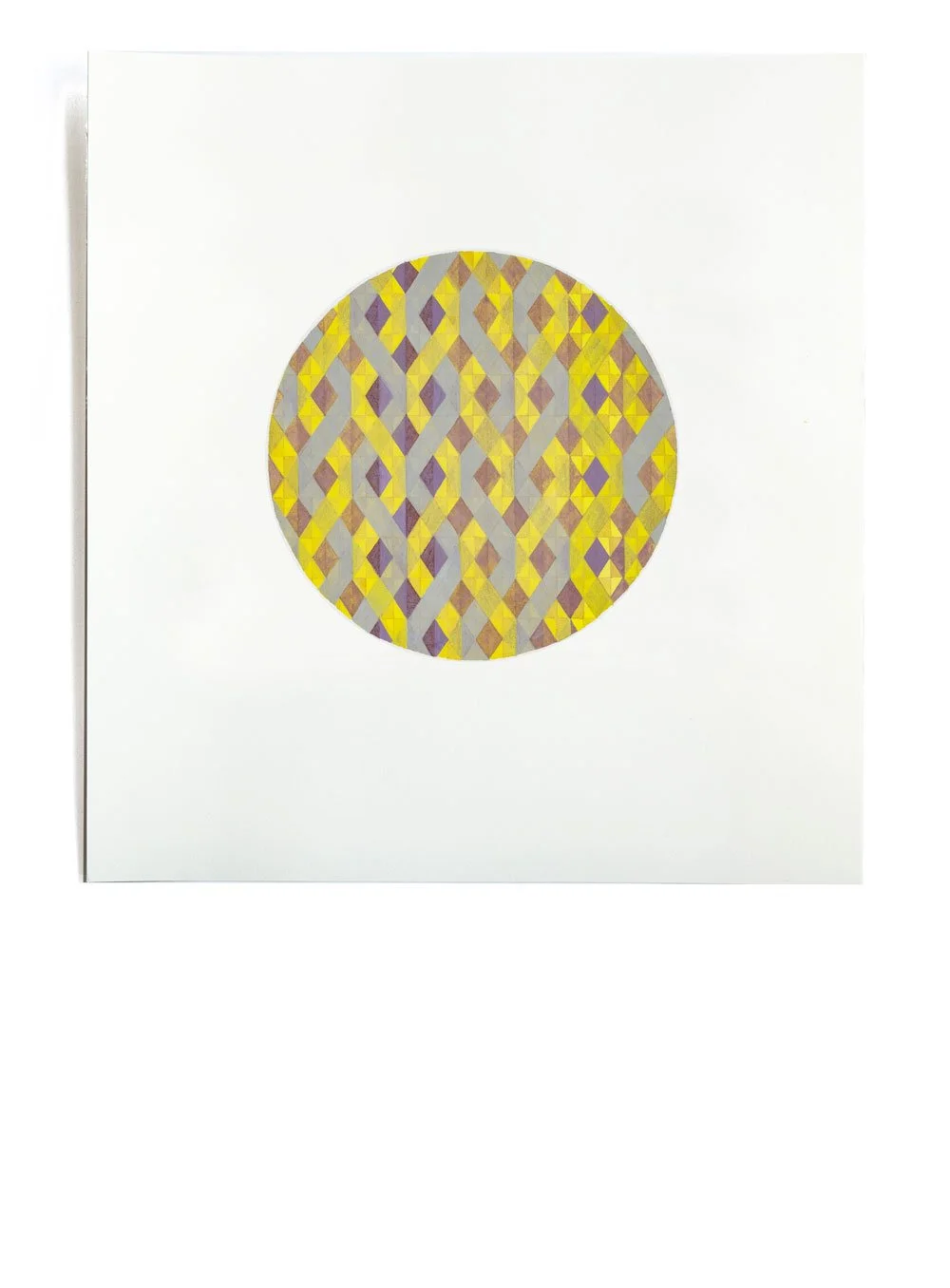




Painting
My practice explores the shared language of grid-based painting, music and weaving, especially notions of rhythm, counterpoint and shimmer. A fluctuating figure/ground relationship creates visual shimmer or what Bridget Riley calls ‘a gentle kind of emerging and receding syncopation’. Pattern and colour, contrasts of opacity and transparency all contribute to the interplay of layers and visual polyphony.
The way I paint is cumulative and echoes the construction of a piece of music or woven textile in that each unit is painted individually. Like a music note or weft pick, each unit is an essential part of the whole. For me, this measured way of working is meditative and results in soft geometric forms often found in weaving. Even a basic grid provides many choices – some forms remain dormant in one layer only to be emphasised in the next. This balancing of exactness and order, softness and irregularity is an ongoing fascination. Strict structures such as a grid or fugue can easily withstand some inaccuracies or irregularities, be they tactical or accidental. Precise structures and processes, rather than being restrictive, can act as a container that facilitates and stimulates improvisation.
‘I learned more from painters than I learned from composers.’
- Morton Feldman
‘Music is the ultimate teacher.’
- Wassily Kandinsky
Violet Thrum, 2025
Ink and gouache on paper, 30cm x 30cm
Soft Octagons 1, 2025
Ink and gouache on paper, 28cm x 37.5cm
Soft Octagons 2, 2025
Ink and gouache on paper, 28cm x 37.5cm
Soft Octagons 3, 2025
Ink and gouache on paper, 21cm x 30cm
Stagger, 2025
Ink and gouache on paper, 30cm x 30cm
Dapple, 2025
Gouache on paper, 21cm x 30cm
Yellow Patter, 2024
Gouache on paper, 21cm x 30cm
Dappled Labyrinth, 2024
Gouache on paper, 30cm x 30cm
Blue Thrum, 2023
Ink and gouache on paper, 21cm x 30cm
Warm Maze, 2022
ink, gouache, colour pencil on paper, 21cm x 30cm
Warm Shimmer, 2024
Gouache and colour pencil on paper, 21cm x 30cm
Blue/Gold Whirr, 2023
Gouache and ink on pergamenata, 23cm x 32cm
Goose Eye, 2024
Gouache on paper, 21cm x 30cm
Diamond Weave, 2023
Gouache on paper, 41cm x 50cm
Spacious Diamond Weave, 2023
Gouache on paper, 31cm x 31cm
Gold Dapple, 2024
Gouache on paper, 21cm x 30cm
Woven Polygons, 2021
Ink and gouache on paper, 21 x 29.7cm
Checkered Tracks, 2021
Ink, gouache and colour pencil on paper, 31 x 31cm
Inky Lattice, 2021
Ink and gouache on paper, 31 x 31cm
Concentric, 2021
Ink and gouache on paper, 21 x 29.7cm
Inky Tessalation. 2021
Ink and gouache on paper, 21 x 27.9cm
Hollow Octagons, 2021
Gouache on paper, 21 x 29.7cm
Mauve and Ochre Blocks, 2021
Ink and gouache on paper, 21 x 29.7cm
Checkered Track Study, 2021
Ink, gouache and colour pencil on paper, 21 x 29.7cm
Burnt Siena Maze, 2020
Gouache on paper, 21 x 29.7cm
Hopsack, 2020
Ink and gouache on paper, 21 x 29.7cm
Blue Octagons, 2020
Gouache on paper, 21 x 29.7cm
Floating Polygons, 2020
Gouache and ink on paper, 21 x 29.7cm
Drifting Maze, 2020
Gouache on paper, 21 x 29.7cm
Mauve and Ochre Stack, 2019
Gouache on paper, 21 x 29.7cm
Long Hexagons, 2019
Gouache on Paper, 21 x 29.7cm
Stacked Octagons, 2019
Gouache on paper, 21 x 29.7cm
Grey Diamonds, 2019
Gouache on paper, 21 x 29.7cm
Concertina, 2018
Gouache on paper, 21 x 29.7cm
Lattice Study, 2018
Gouache on paper, 21 x 29.7cm
Mauve Concertina, 2018
Gouache on paper, 21 x 29.7 cm
Pale Blue Lattice, 2018
Gouache on paper, 21 x 29.7cm
Diamonds and Squares, 2018
Gouache on paper, 21 x 29.7cm
Maze, 2017
Gouache on paper, 21 x 29.7cm
Yellow Ovals, 2016
Gouache on paper, 21 x 29.7cm
Orange Squares, 2015
Gouache on paper, 21 x 29.7cm
Blue Green Yellow, 2014
Gouache on paper, 33.5 x 48cm
Pattern 3, 2014
Gouache on paper, 33.5 x 48cm
Pastel Hexagons, 2014
Gouache on paper, 21 x 29.7cm
Bright Hexagons, 2018
Gouache on paper, 21 x 29.7cm
Red Ovals and Diamonds, 2017
Gouache on paper, 21 x 29.7cm
Zigzag 1, 2016
Gouache on paper, 21 x 29.7cm
Blue Yellow Circles Diamonds, 2015
Gouache on paper, 33.5 x 48cm
Ovals on Gold, 2014
Gouache on paper, 21 x 29.7cm
Yellow Triangles, 2014
Gouache on paper, 21 x 29.7cm
Pattern Red Orange Blue, 2014
Gouache on paper, 21 x 29.7cm
Zigzags with Pentagons, 2018
Gouache on paper, 35 x 49cm
Orange Cartwheels, 2017
Gouache on paper, 21 x 29.7cm
Zigzag 2, 2016
Gouache on paper, 21 x 29.7cm
Red Pattern, 2014
Gouache on paper, 21 x 29.7cm
Blue Yellow Ovals Diamonds, 2014
Gouache on paper, 33.5 x 48cm
Yellow Green Red Hexagons, 2014
Gouache on paper, 21 x 29.7cm
Pink Yellow Lime Diamonds, 2014
Gouache on paper, 33.5 x 48cm
Tessellation 3, 2017
Gouache on Paper, 21 x 29.7cm
Grey Lattice, 2016
Gouache on paper, 21 x 29.7cm
Blue Yellow Pattern, 2015
Gouache on paper, 21 x 29.7cm
Diamonds Ovals, 2014
Gouache on paper, 21 x 29.7cm
Hexagons Stripes, 2014
Gouache on paper, 21 x 29.7cm
Stripes Diamonds Ovals, 2014
Gouache on paper, 21 x 29.7cm
Ochre White Grey, 2014
Gouache on paper, 21 x 29.7cm

